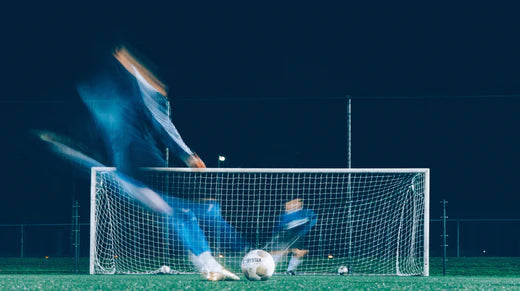We all know that the penalty box is the extended box-shaped area in front of each goal on either side of the midfield. The primary purpose of the penalty area is related to the awarding of penalty kicks. But there are some other purposes that it serves as well.
All players need to know the laws of the game applicable inside the penalty box in football to ensure that no penalty is awarded to the opposing team.

The Purpose of the Penalty Area
The rectangular football penalty box or the 18-yard box extends 18 yards (16.5 meters) to each side of the goal and also 18 yards to the front of it.
Within this area, is a smaller rectangular area called the goal area. This area extends 6 yards beyond the goalposts on the sides and 6 yards Infront of the goal line.
The defending team can take goal kicks and free kicks from this box. Indirect free kicks awarded to the opponents are taken from a point parallel to this touchline and nearest to the actual spot of violation.
Beyond that, there is the penalty mark for placing the ball for a penalty kick. It is at a distance of 12 yards from the goal line and in line with the goal center. In other words, it is at the center of the penalty area. However, the penalty box has no special role to play during a corner kick.
The outermost feature of the penalty box is the D-shaped penalty arc. During a penalty kick, only the goalkeeper and the kicker can remain inside the box. Any of the goalkeeper’s teammates stepping inside the arc will be considered encroachers.
Within the penalty area, goalies can use their hands to touch the ball. If any goalkeeper uses their hands or arms to touch the ball outside their own penalty area, the opponents will get a direct free kick. However, the penalty box has no special role to play during a corner kick.
If the goalkeeper handles the ball beyond the penalty box in football, the referee can consider this as a yellow card or a red card offense depending on the conditions.

Image Credit: Jay Bock on Flickr.com
Football Rules About Penalty Kicks
Note, the football rules are framed by the International Football Association Board (IFAB) which is a different body from FIFA. However, its justification for football laws is recognized by FIFA.
As per the IFAB laws, a penalty kick can be awarded to the attacking team when a player commits a direct free-kick offense within the penalty box area in football. These include a contact foul during shielding or a handball. In addition, there is a list of other off-the-football field offenses which can make the referee award a direct free kick to a team.
Once a penalty is awarded, the ball is placed on the penalty spot. All players other than the kicker and the goalie should remain outside the penalty box endlines including the arc. They should also remain behind the penalty mark or at least 10 yards away from it.
After the kick, if the ball rebounds from the keeper or the bar post and remains within the field sidelines, it is considered live. In that case, any player can play it. However, the kicker cannot play the ball unless it has been touched by another player.

Final Thoughts
So, these are all the facts you need to know about the penalty box in football. It is important for all football players to know the importance of the penalty area to prevent a kicker vs goalkeeper scenario.
During training sessions, using the Open Goaaal Football Rebounder is one of the best ways to keep the ball in play during the training sessions. Check out the various sizes to pick the one that suits your football training needs.
